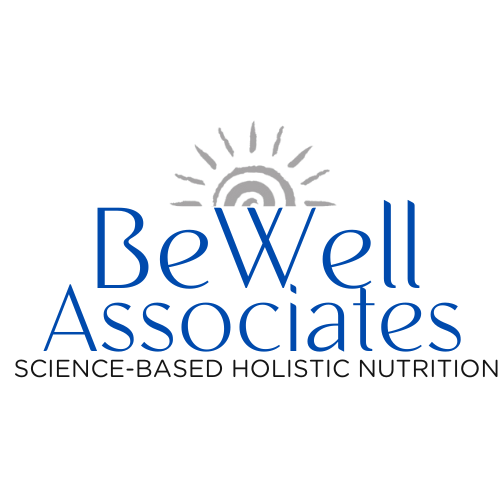Revised 4/6/21
As the COVID-19 vaccines are rolled out, it’s important to prepare your body for receiving the vaccine and reduce the risk of having a reaction. In this post, I’ll offer an explanation of why people have reactions and what you can do to prevent them.
The part of a vaccine to which your body may react is called the “adjuvant.” Adjuvants are ingredients that help elicit a strong immune response in the body. Below is some information regarding PEG, which is the known adjuvant in the current emergency use vaccines from Pfizer and Moderna.
Adjuvants are included in vaccines to stimulate the body’s immune response to the virus so that the body produces antibodies. Antibodies are then protective of future infections and the reason why we get vaccinated.
This information is especially important if you have histamine or oxalate intolerance, allergies, or autoimmunity.
The Adjuvant in the Pfizer and Moderna COVID Vaccines: Polyethylene Glycol (PEG)
The adjuvant used in the COVID-19 vaccine is Polyethylene Glycol or PEG, the same class of chemical used in Miralax, the common laxative. We know that PEG, which is highly water-soluble, leaves the body in 24-48 hours. It breaks down into four chemicals, one of which is oxalic acid. These chemicals can be a lot for the body to process. You can make dietary choices to help reduce the burden on your body and especially the liver.
We do know that there are many conditions made worse by oxalic acid. These include arthritis, interstitial cystitis, recurring UTIs, fibromyalgia, kidney stones or kidney failure, and many others. It would seem wise, especially if you know that you are sensitive to oxalic acids, have frequent histamine reactions, or one of the listed conditions, to protect the liver from toxic overload by avoiding high oxalic acid foods for a good week prior to and after inoculation.
Avoid these foods that are high In oxalic acid before and after vaccination:
- wheat
- soy
- nuts
- spinach
- beets
- celery
- swiss chard
- kale
- sweet potatoes
- blueberries and blackberries
- Concord grapes
- leeks
- peanuts
- pecans
- chocolate
- pepper
- draft beer
Help Rid Your Body Of Byproducts Of The Adjuvant
Another positive action you can take besides reducing the body’s toxic burden when metabolizing the adjuvant is to help rid the body of the breakdown of byproducts. We know that Vitamins B1, B2, and B6 are important cofactors for this process to occur. Adding a strong B Complex at least a week prior to and the week after being vaccinated would be a smart move, especially for those who tend to have allergic reactions.
Those of you using the Two Per Day multivitamin from BeWell are well covered since the B vitamins in that product are in meaningful doses and in their most bioavailable form. If you’re taking a multi other than Two Per Day, consider adding B Supreme to your regimen.
I am also a strong believer in the power of NAC.
For those of you that have been following my blog posts through this pandemic, you know that I always make this recommendation. NAC produces glutathione, which is the master antioxidant, and protector of our cells. It’s powerful liver support, aids in detoxification, strengthens the bronchioles, rebuilds muscles, and maintains antioxidant levels. Hospitals are using NAC in nebulizers to thin mucous, and have long used it in IV form for treating Tylenol toxicity and mushroom poisoning. I firmly believe that these days everyone should be taking 500 to 1000 mg daily.
You can also decrease your risk of reactions by eating organic as much as possible, again, to decrease the toxic burden on your liver and immune system. Since glyphosate (Roundup) is the primary toxin in our food supply, using ½ tsp of the amino acid Glycine is protective.
Read more on glyphosate in foods HERE.
I use glycine daily since I cannot always eat organic and want to make sure that I minimize my exposure. I would add glycine at least during the week leading up to and after the vaccine.
To learn more about vaccine safety, check out this article in Nature.
Summary of suggestions for 1-2 weeks before and after vaccination:
- Eliminate foods high in oxalic acid.
- Make sure you’re getting your Bs.
- Add 500-1000mg NAC daily.
- Add 1/2 teaspoon Glycine.
Order your supplements from our online stores or contact the BeWell office to set up an appointment for specific nutritional support around the vaccine.
About the Johnson & Johnson Vaccine
The J&J vaccine is a different technology than the Pfizer and Moderna. It uses a single dose (although trials are taking place to give a small booster shot later) and rather than using an adjuvant (propylene glycol) to trigger an immune response, it instructs our own cells to make the SARS-2 spike protein. This spike protein is carried in an adenovirus, which we are all familiar with as a cause of the common cold, and it’s this spike protein which triggers an immune response.
The most common side effects of this vaccine are injection site pain, fatigue, muscle and joint pain and headaches, much like the Pfizer and Moderna but there is less chance of anaphylaxis since this vaccine doesn’t trigger a histamine response.
For more detailed info on these three vaccine please see here.
BeWell,

P.S. Be sure to see this post about keeping your immune system strong.





Add Comment